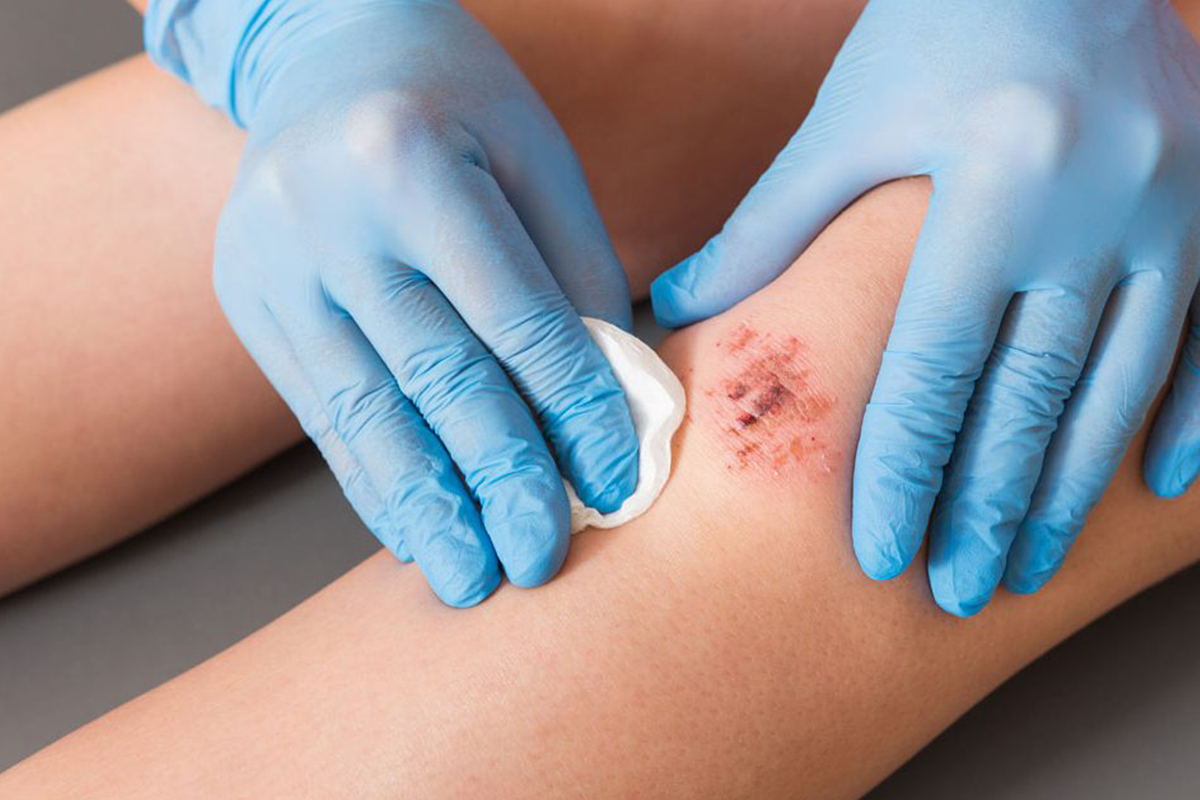Wounds are a common occurrence in everyday life, whether they result from minor cuts, scrapes, burns, or surgical procedures. Proper wound care is essential to prevent infection, promote healing, and minimize scarring. This guide provides an overview of wound types, treatment methods, and best practices for effective wound management.
Types of Wounds
- Abrasion – Caused by friction, such as scraping the skin against a rough surface.
- Laceration – A deep cut or tear in the skin, often caused by sharp objects.
- Puncture – A wound created by a pointed object, such as a nail or needle.
- Burns – Injuries caused by heat, chemicals, or radiation.
- Surgical Wounds – Incisions made during medical procedures that require proper post-operative care.
- Pressure Ulcers – Sores caused by prolonged pressure on the skin, common in bedridden patients.
- Diabetic Ulcers – Open sores that develop due to poor circulation in diabetic patients.
Basic Principles of Wound Care
Proper wound care follows the principles of cleansing, protection, and monitoring. Here are the essential steps:
- Clean the Wound
- Wash your hands thoroughly before touching the wound.
- Rinse the wound with clean, lukewarm water to remove debris.
- Use mild soap or antiseptic solutions for deeper wounds.
- Avoid using hydrogen peroxide or alcohol, as they can delay healing.
- Stop the Bleeding
- Apply gentle pressure with a clean cloth or sterile bandage.
- Elevate the wound if possible to reduce blood flow.
- Apply an Antiseptic and Dress the Wound
- Use an antibiotic ointment to prevent infection.
- Cover the wound with a sterile bandage or dressing to protect it from contaminants.
- Change the dressing daily or whenever it becomes wet or dirty.
- Monitor for Signs of Infection
- Redness, swelling, or warmth around the wound.
- Pus or unusual discharge.
- Increased pain or fever.
- Seek medical attention if signs of infection appear.
Advanced Wound Care Treatments
For chronic or severe wounds, additional medical interventions may be required:
- Stitches or Staples – Used for deep lacerations that require closure.
- Wound Debridement – Removal of dead tissue to promote healing.
- Skin Grafts – Used for severe burns or non-healing wounds.
- Hyperbaric Oxygen Therapy – Helps oxygenate tissues to speed up healing.
Preventing Wound Complications
- Keep the wound clean and dry.
- Avoid picking at scabs to prevent scarring.
- Eat a balanced diet rich in vitamins and protein to support tissue repair.
- Stay up to date on tetanus vaccinations for deep or dirty wounds.
When to Seek Medical Attention
Consult a healthcare provider if:
- The wound is deep, large, or caused by a dirty object.
- There is excessive bleeding that does not stop after 10 minutes.
- Signs of infection develop.
- The wound does not heal within a reasonable time frame.
Conclusion
Proper wound care is crucial for a quick and smooth recovery. By following essential wound management techniques, you can reduce the risk of infection and complications. For severe wounds, always seek medical advice to ensure optimal healing and recovery.
